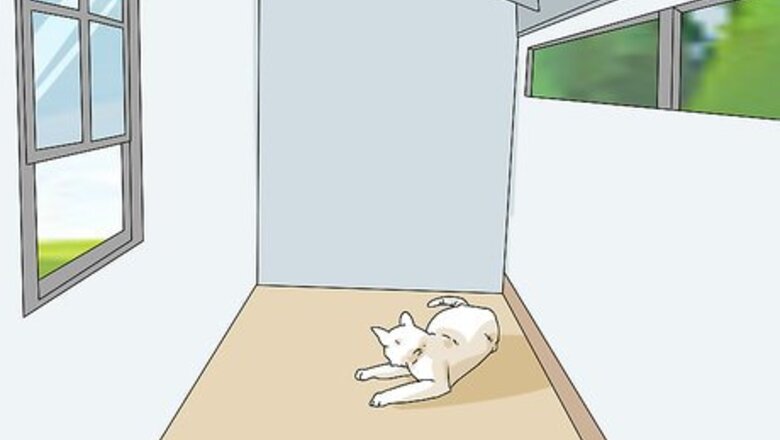
views
Giving Your Cat Space
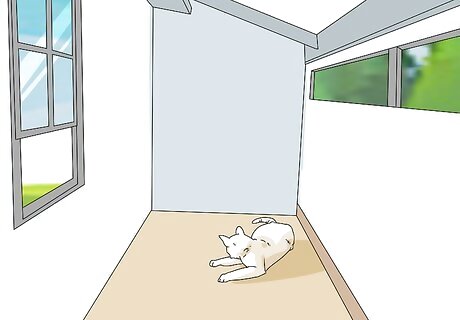
Put your cat in a small room for a few days to a few weeks. When you get a new cat, it's important to give it a small space where it feels safe, such as a washroom. Be sure to give it everything it needs: water, food, litter, something to sleep on, a hiding place, some toys, and a scratching post. Let your cat get comfortable enough until it wants to venture out into the house. Make sure your cat's food station is easily accessible, but also not near the litter box. If you have other pets, keep them away from your cat until it's comfortable.

Keep your cat's environment as peaceful as possible. If you have kids that are watching TV loudly, a dog that likes to roam, or you're prone to yelling throughout your home, your cat will feel it. Make an effort to keep your cat's environment quiet and adapt your volume to the room it's in. Try to designate one room for your cat that they can always retreat to for a quiet time away from the rest of the home. Often, the easiest choice is its original safe space, but you can give it an additional room as well if you'd like. If you have pets or kids, keep them out of your cat's safe room (s) at all times.

Enjoy quiet time in your cat's room. Whether this is the room you designate for it or the room they happen to be hiding in, try and spend some time with the cat. Catch up on some paperwork, read a book, watch TV quietly—anything relaxing. Talk to your cat in a soothing and soft tone to help it get used to your voice. Pet your cat in their room when they're comfortable with you.
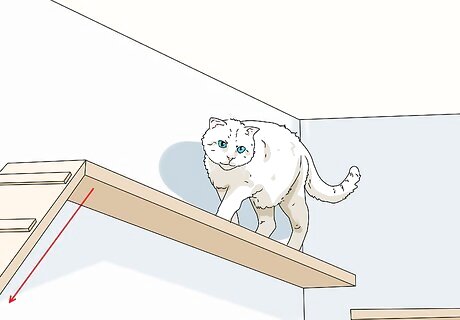
Give your cat as much vertical space as possible. Cats are much more likely to explore your home when they're up high, as this makes them feel safe and comfortable observing their surroundings. Consider investing in cat trees and other pieces of furniture that increase vertical space. Place mats on top of your bookshelves to create more vertical space. Install wall-mounted or door-mounted shelves for your cat to rest on. Use a treat or feather toy to get your cat onto the shelves.

Provide your cat with lots of escape routes. Keep on top of cleaning your home and make sure there aren't any dead ends. Be sure to give your cat enough shelves to move around your home and keep everything as decluttered as possible. Your cat is more likely to feel uncomfortable when it feels trapped. Make sure that each room has a way for your cat to escape the room. Try to provide at least one vertical escape route in each room whenever possible. While providing your cat with hiding spots is a good idea, make sure you can reach the pet in them, just in case of any emergency.
Bonding with Your Cat
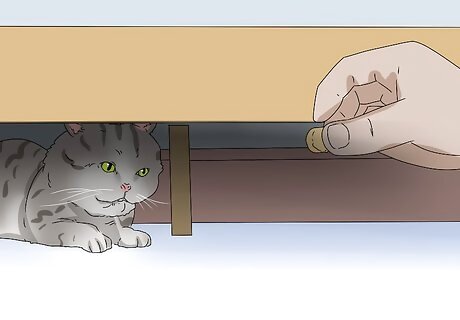
Use treats to get your cat out of hiding. If your cat is still scared of you once it starts roaming the house, gently roll or toss a treat to it. If it eats the treat, try giving it another one. Continue this process and bring the cat closer and closer by decreasing the distance between you and the treat. Lay down on the floor and speak to your cat encouragingly as you give it treats. Don't ever force the treat on your cat. If it starts to run away, put the treat down and leave.
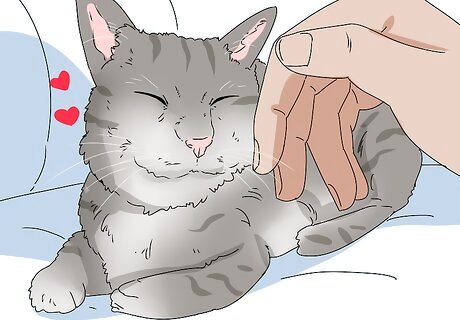
Blink slowly at your cat as a sign of affection. When your cat gives you a slow blink, it's a sign that it loves and trusts you. With that in mind, do the same to it! When it looks at you, slowly close your eyes, keep them closed for 1 to 2 seconds, and open them slowly. If your cat returns the blink, you know it's starting to get more comfortable with you. If your cat is comfortable enough, blink at it as you pet it or hold it in your lap. Talk to your cat in a soothing voice as you blink at it.
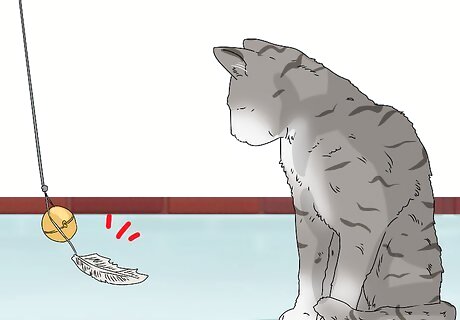
Play with your cat gently when it's comfortable enough. After your cat starts to get enough confidence to stop hiding, start engaging with it. For example, put the feather-end of a cat toy to the ground and move it around in quick, small motions. If your cat gets interested, keep playing with it as long as possible. Use crumbled paper to play with your cat. Create reflections with a watch, CD, or other reflective item and have your cat chase them. Head to the pet store and purchase some commercial toys for your cat. Be sure to praise your cat as you play with it.
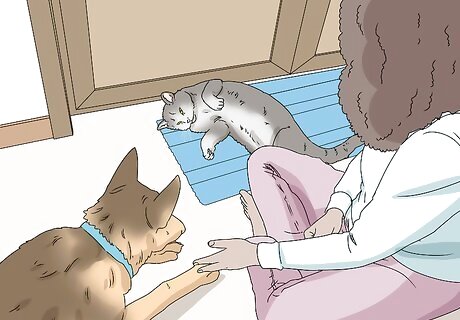
Introduce your cat to new guests to help them get comfortable. If you have people who visit you frequently, consider introducing your cat to them. Start by taking your cat into a small room, such as a bathroom. Afterward, bring the guest in. Just don't push them too hard and be sure to reward any calm behavior with treats. Remember that it will take more than one introduction for your cat to get comfortable with a new guest. Talk to each guest first before you introduce them to your cat and make sure they're comfortable meeting your cat a few times when they come over.
Petting Your Cat

Let your cat come to you first. Don’t pet your cat immediately! You're still a stranger, and trying to pet it will come off as aggressive. Give it some time to get used to your presence and let it approach you when it's ready. Never pet your cat until it approaches you.
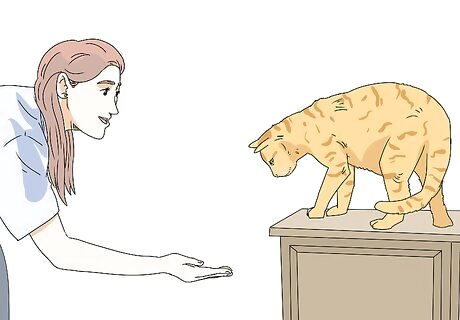
Pet your cat carefully and slowly. Once your cat approaches you, move as slowly and softly as possible. Try not to squeal in excitement over it and move carefully. After petting your cat for a bit, stop. Don't take too long, as it's best to play hard to get with new cats. Let your cat nudge your hand or leg with its chin when it wants to get pet. Avoid putting your hand over your cat’s head since it may feel threatened. Pet your cat on the head, under the chin, down the back, and at the base of the ears. Don't pet your cat on the tummy, tail, and legs or feet.
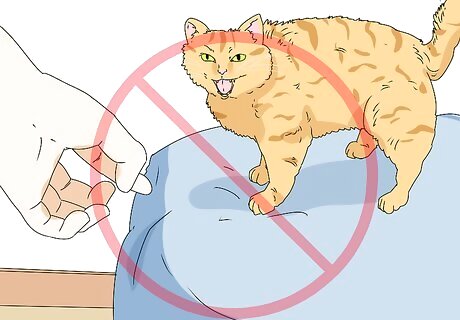
Avoid petting your cat if it hisses, twitches its tail, or runs away. When you extend your hand to pet your cat, note its behavior. If it shows any signs of being scared or angry, don't reach out to it again until it gets closer to you. Always let your cat feel in charge of its interactions with you when it's adjusting.


















Comments
0 comment